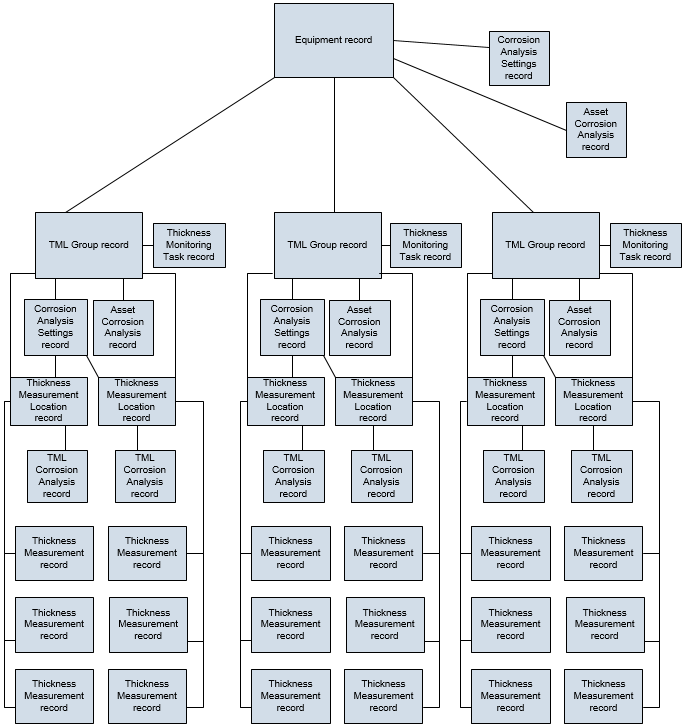The following diagram illustrates the structure of Corrosion Analyses that include TML Groups. Specifically, this diagram illustrates the records and links that would exist if a Corrosion Analysis included one Equipment record (representing an asset), which is linked to three TML Groups. The boxes in the diagram are labeled according to the records that they represent, and the lines connecting the boxes represent the links between these records in a Corrosion Analysis.

The following table provides information on how the records that are illustrated in the diagram are created manually or automatically.
| Record | Notes |
|---|---|
| Corrosion Analysis Settings |
Manually for Equipment records -and- Automatically for TML Groups that you create and link to those equipment records. |
| Asset Corrosion Analysis | Automatically for Equipment records and TML Groups, but at different points in the workflow. |
| Equipment | Manually. |
| Thickness Measurement | Manually. |
| Thickness Measurement Location |
Manually. |
| Thickness Monitoring Task | Automatically (when a Corrosion Analysis Setting are created). |
| TML Corrosion Analysis | Automatically (when a Thickness Measurement Location record is saved). |